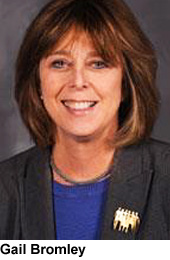Creative clinical experiences aid transition from academia to practice.
 Educators and clinicians combine forces to impart knowledge and experiences that enhance the leadership, advocacy, and innovation skills of future advanced practice nurses.
Educators and clinicians combine forces to impart knowledge and experiences that enhance the leadership, advocacy, and innovation skills of future advanced practice nurses.
 When nurse colleagues get together to share patient care experiences and values they hold in common, they find a synergy that stimulates new ideas and is mutually rewarding. It was with that in mind that we joined forces to implement a program to enrich learning among cohorts of psychiatric mental health advanced practice nursing students.
When nurse colleagues get together to share patient care experiences and values they hold in common, they find a synergy that stimulates new ideas and is mutually rewarding. It was with that in mind that we joined forces to implement a program to enrich learning among cohorts of psychiatric mental health advanced practice nursing students.
To optimally prepare these students for their future roles, we focused on imparting knowledge and experiences that would enhance their leadership, advocacy, and innovation skills. As a result of our energetic and dynamic discussions, University Hospitals Case Medical Center’s C-STAR program was inaugurated.
 Funded by Peg’s Foundation, C-STAR stands for clinical competence, socialization, transformational leadership, advocacy, and resilience. Its primary goal is to increase the number of well-prepared advanced practice registered nurses (APRNs) with psychiatric/mental health expertise. In addition to its student education focus, the initiative was developed to inform nurses, physicians, and administrators about the autonomous roles of advanced practice nurses in organizations.
Funded by Peg’s Foundation, C-STAR stands for clinical competence, socialization, transformational leadership, advocacy, and resilience. Its primary goal is to increase the number of well-prepared advanced practice registered nurses (APRNs) with psychiatric/mental health expertise. In addition to its student education focus, the initiative was developed to inform nurses, physicians, and administrators about the autonomous roles of advanced practice nurses in organizations.
Socialization is a critical element of preparing APRNs for their leadership roles. With C-STAR’s transformational learning model, the first of its kind in the region, socialization occurs under the clinical supervision of psychiatric mental health experts. Students are placed in inpatient, consultation liaison, ambulatory, and private practice facilities, as well as in emergency departments of the academic medical center and its community affiliates. Through detailed planning and extensive interdisciplinary discussions, we developed clinical experiences that provide students with active, challenging interventions for patients and families. To build on their strengths and address clinical knowledge gaps, students are matched with clinical preceptors, a process that requires trust between academic and medical center health professionals.
Our hope was to create learning environments that would develop skill sets well-grounded in competence and confidence. We expected that, upon completing their intensive course and clinical work, the students would have mixed feelings of excitement and trepidation as they embarked on their new assignments. Therefore, we concentrated on creating clinical experiences and opportunities that would substantially impact transition into their APRN roles.
We were well-aware that healthcare institutions expect to hire only high-functioning APRN candidates. Thus, we designed the C-STAR program to build on individual, student-acquired competencies that, upon employment, would minimize or even eliminate an employer’s need to provide certain aspects of orientation. Transition into the APRN role is enhanced and made seamless as a result of clinical experiences and familiarity with professionals in the institution.
Rationale for the C-STAR program model
Institutions across the United States have reported high APRN turnover rates during training and the first year of practice that are associated with insufficient clinical supervision. C-STAR addresses this issue by providing formal, regularly scheduled cohort sessions facilitated by clinical supervisors. When APRN students participate in case discussions, they also develop and enhance their skills as equal members of a professional interdisciplinary clinical team that makes treatment decisions.
Our enthusiasm, combined with that of clinicians who were interested in precepting intellectually curious APRN students, led to implementation of the C-STAR program. Each semester, clinicians dedicate approximately 15 percent of their time to supervising individual students. After reviewing a course syllabus with defined clinical competencies—including professional socialization, development of leadership attributes, advocacy related to mental health issues, and resilience as APRNs—the students and their clinical preceptors commit to achieving mutually agreed-upon goals that are consistent with their professional portfolios.
Each semester, students and preceptors evaluate student clinical performance in the following categories:
- Understanding the APRN role
- Developing strengths and knowledge
- Taking responsibility and practicing autonomy
- Identifying learning needs and fulfilling established goals
- Respecting patient preferences
- Creating a positive environment
- Implementing evidence-based best practices in patient care
- Functioning on interdisciplinary teams
- Achieving optimal clinical practice (assessment, diagnosis, and treatment)
The evaluative process includes two preceptor and faculty-member augmented components—self-evaluation and self-reflection. This dual-evaluation learning model enhances student competence and confidence in clinical skills while helping them prepare for practice that requires independent assessment, diagnosis, and treatment.
Passion for excellence and mutual respect
Our dedication to high standards and recognition of the importance of collegiality served as the impetus for our shared desire to optimize these critical components of student clinical and academic programming. In implementing the C-STAR program, we were deliberate in identifying what we wanted to accomplish. To ensure a successful program, we agreed to collaborate frequently. Students found our passion for excellence contagious. Because patients with psychiatric diagnoses face multiple, complex challenges, we made certain the students would be precepted by psychiatric mental health clinicians who appreciated and acknowledged APRN contributions.
Our ongoing discussions and interactions with the students and clinical preceptors required extensive time commitment to identify goals and address concerns. Recognizing that students perform at various levels, possess different clinical strengths, and have knowledge gaps and learning styles that require individual attention, we established learning and clinical goals that would enhance their clinical competencies and prepare them as APRNs for patient care and treatment.
To promote buy-in of the program and engagement among experienced APRNs and psychiatrists, we provided articles about the APRN role, associated transitions, and meaningful clinical precepting. To help students develop new skills and gain confidence, preceptors reinforced the importance of autonomy and active learning. Positive feedback from students confirmed that they were making progress on their goals and increasing their clinical competencies. Students also informed us that their preceptors were influencing their clinical practice and encouraging them to get out of their comfort zones by making autonomous decisions. As the program progressed, students realized that they were, indeed, experiencing greater autonomy; developing critical thinking; increasing their leadership, advocacy, and decision-making skills; and actively participating on interdisciplinary teams.
To validate progress, faculty members and clinical preceptors provided continuous, timely, and meaningful feedback to students. To refine critical-thinking skills, preceptors encouraged students to discuss interventions where desired clinical outcomes were not achieved. They also kept in mind the importance of preparing students for the interdisciplinary environment in which APRNs work. To promote socialization and dialogue with students from other healthcare professions, students were given opportunities to participate in individual and group supervision with other graduate students and residents from psychiatry, psychology, and pharmacy who shared their clinical expertise and knowledge.
The C-STAR program has been a catalyst for change. Feedback from clinical preceptors, faculty members, and students has provided a comprehensive view of each student’s progress and guidance for improving clinical experiences. Because students’ previous clinical experience with psychiatric patients varied widely, progress in achieving goals identified in their course-required professional portfolios was closely monitored, and the information was shared with faculty members.
This information is important because clinicians and current APRNs have shared concerns that recent graduates require more precepting than is currently offered in graduate programs. The C-STAR program ensures that we focus on developing therapeutic and psychopharmacological skills and requiring students to actively participate in interdisciplinary supervisory sessions.
Excellence in APRN performance
APRN students who have participated in the C-STAR program have had a strong voice about their roles, their interest in providing leadership, and their impact on patients and the healthcare environment. Our work with each cohort of APRN students has required us to pay attention to their individual needs, their receptivity to making a successful transition as an autonomous clinician, and their willingness to adapt to constant change, pursue new knowledge, and take risks to implement innovation.
To ensure a smooth education-to-practice transition, we have sought to maximize feedback from clinical preceptors, APRN students, and others in the organization who interact with the students. The practice environment needs optimally performing individuals to assume APRN roles. Competencies we value and which C-STAR cohorts have developed include clinical diagnosis, effective patient treatment, pharmacological knowledge, interdisciplinary skills, and organizational leadership.
Educational and clinical preparation of APRN students necessitates that they be exposed to exemplars that model professional attributes and behaviors, including confidence and competence. We also focus on how these individuals have performed in the first year of practice and seek feedback from them. Our interest in working with these student cohorts grew out of our commitment to patients as well as our dedication to preparing another generation of APRNs whose success will generate new ideas and help prepare future generations of APRNs. RNL
Gail E. Bromley, PhD, RN, is director of nursing research and clinical educator at University Hospitals Case Medical Center in Cleveland, Ohio, USA. Kathy D. Wright, PhD, RN, GCNS-BC, PMHCNS-BC, is assistant professor and chief diversity officer at The Ohio State University College of Nursing in Columbus, Ohio. She also holds a faculty position in The Ohio State University Discovery Themes-Prevention and Treatment of Chronic Brain Injury Institute.
Editor’s note:
Kathy Wright will present “Psychiatric Mental Health Advanced Practice Nurses Prepared During Their Academic Careers for Interprofessional Care Collaboration” on Saturday, 21 July 2018, at Sigma’s 29th International Nursing Research Congress in Melbourne, Australia. Register here for congress.
Check out these additional articles by presenters at the 29th International Nursing Research Congress.